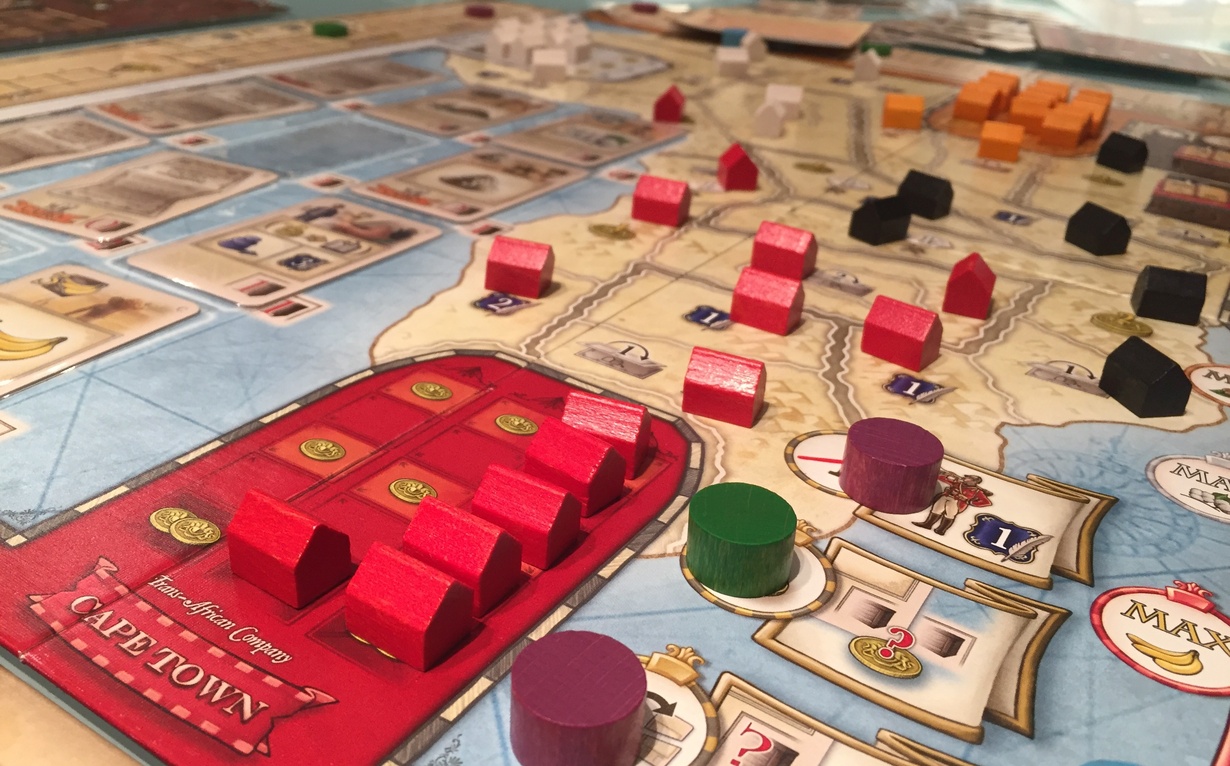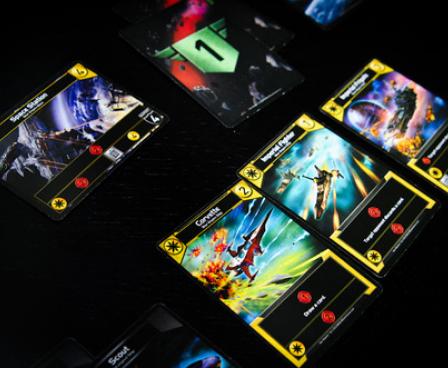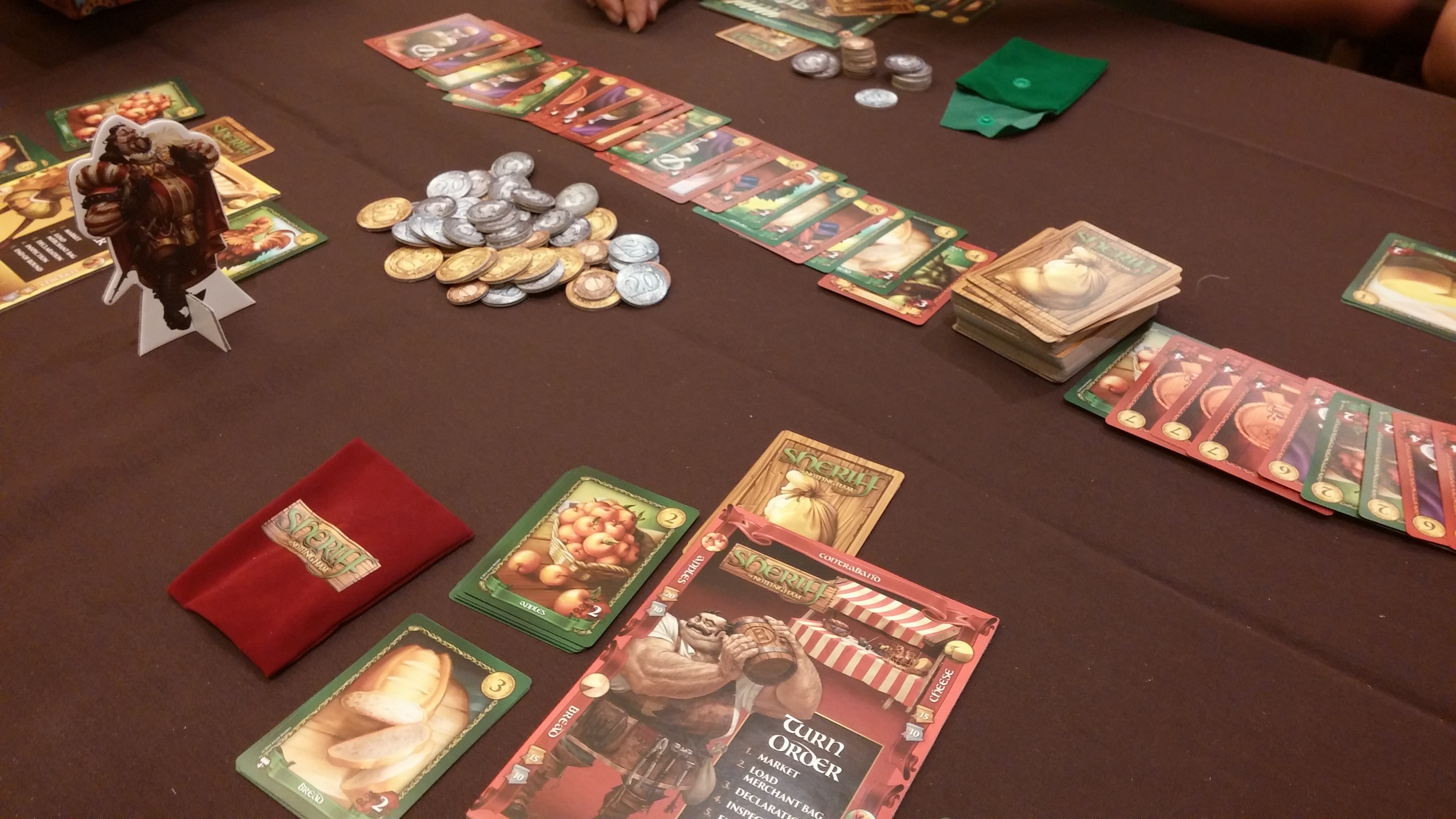Designer: Alexander Pfister
In Mombasa, you play an 18th century chartered company involved in trade in Africa. But not slaves. Seriously, there was enough people wondering about this once the theme of the game was announced that the developers felt compelled to assure players that this game is totally not about slaves.
It is, however, a very good albeit dense Eurogame. Players will go searching for diamonds, trade goods such as bananas, coffee and cotton, and explore the continent. It’s well-balanced and very good.
Interesting Mechanic: Tableau management. Players have a fistful of cards they can play, but they can only play three cards horizontally. At the end of the turn, the cards you’ve played go to three columns above your game board. They then choose one of the COLUMNS to take into their hand. Players need to carefully plan in order to set up monster turns later in the game.
Mombasa is a dense game and it really needs 4 players to shine. However, the core mechanic that drives action selection is really well done, and is well worth your time.

(Photo Credit: Shut Up and Sit Down)









Recent Comments